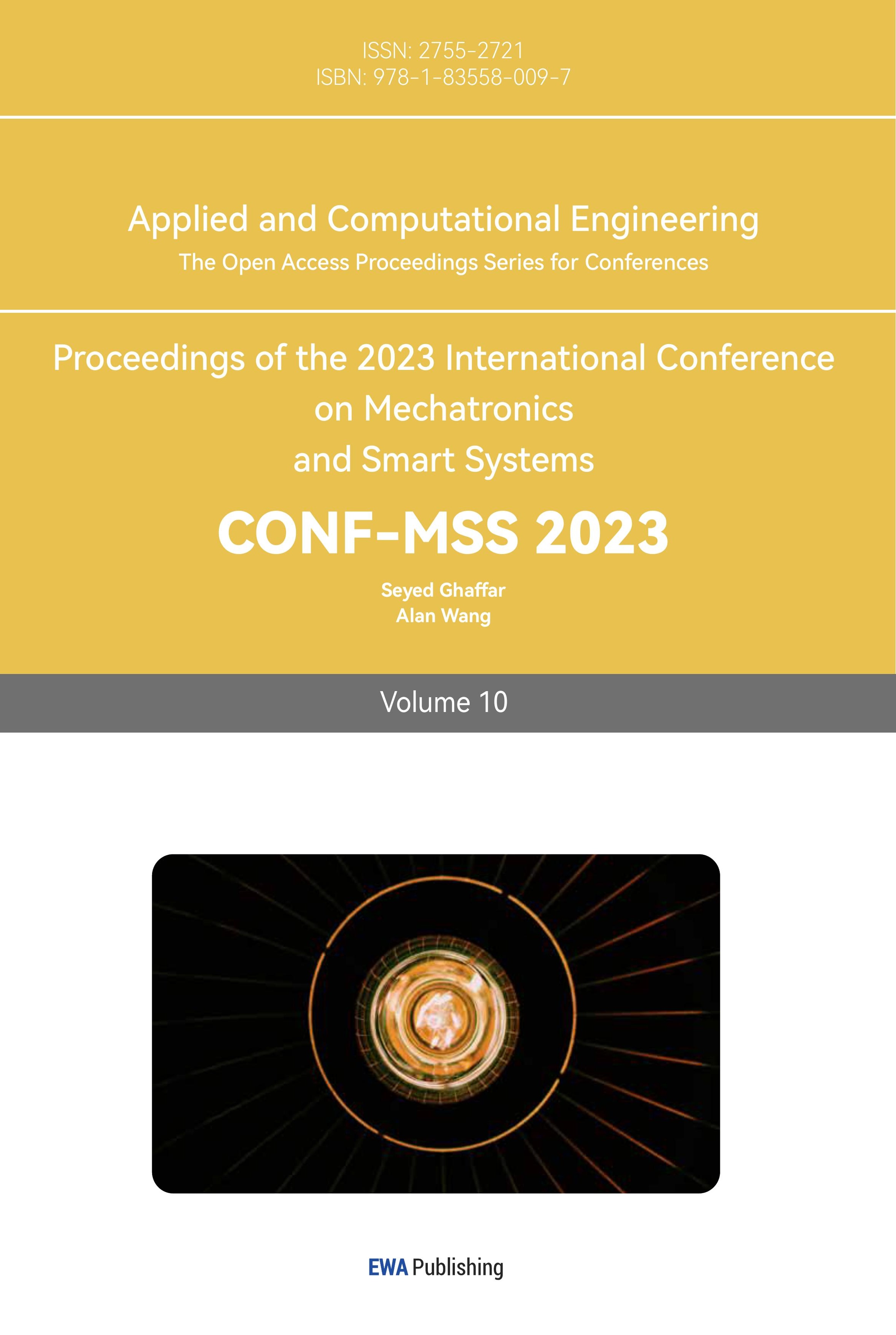References
[1]. Zhang, H. Y., Lin, W. M., and Chen, A. X. 2018 Path planning for the mobile robot: A review. Symmetry, 10(10), 450.
[2]. Yang, L., Qi, J., Xiao, J., and Yong, X. 2014 A literature review of UAV 3D path planning. Proceeding of the 11th World Congress on Intelligent Control and Automation (pp. 2376-2381). IEEE.
[3]. Gu Donglei, Li Xiaoge, Wang Shuo. 2014 Path planning method for mobile robots. Robotics and Applications, (1):28-30.
[4]. Sang, H., You, Y., Sun, X., Zhou, Y., and Liu, F. 2021 The hybrid path planning algorithm based on improved A* and artificial potential field for unmanned surface vehicle formations. Ocean Engineering, 223, 108709.
[5]. Shin, Y., and Kim, E. 2021. Hybrid path planning using positioning risk and artificial potential fields. Aerospace Science and Technology, 112, 106640.
[6]. Lin, X., Wang, Z. Q., and Chen, X. Y. 2020, May. Path planning with improved artificial potential field method based on decision tree. 27th Saint Petersburg International Conference on Integrated Navigation Systems (ICINS) (pp. 1-5). IEEE.
[7]. DING Jiaru, DU Changping, ZHAO Yao and YIN Dengyu. 2016 UAV path planning algorithm based on improved artificial potential field method. Computer Applications (01),287-290.
[8]. ZHAO Ming, ZHENG Zeyu, MO Qingfeng, PAN Yijun and LIU Zhi. 2020 Path planning method of mobile robot based on improved artificial potential field method. Computer Application Research (S2), 66-68+72.
[9]. ZHANG Jianying, ZHAO Zhiping and LIU Yun. 2006 Robot path planning based on artificial potential field method. Journal of Harbin Institute of Technology (08),1306-1309.
[10]. Khatib, O. 1985 Real-time obstacle avoidance for manipulators and mobile robots. In Proceedings. 1985 IEEE international conference on robotics and automation (Vol. 2, pp. 500-505). IEEE.
[11]. LUO Qiang, WANG Haibao,CUI Xiaojin and HE Jingchang. 2019 Improve the path planning of autonomous mobile robots by artificial potential field method. Control Engineering (06),1091-1098.
Cite this article
Jin,F. (2023). Path planning for unmanned automaton based on improved artificial potential field method. Applied and Computational Engineering,10,120-128.
Data availability
The datasets used and/or analyzed during the current study will be available from the authors upon reasonable request.
Disclaimer/Publisher's Note
The statements, opinions and data contained in all publications are solely those of the individual author(s) and contributor(s) and not of EWA Publishing and/or the editor(s). EWA Publishing and/or the editor(s) disclaim responsibility for any injury to people or property resulting from any ideas, methods, instructions or products referred to in the content.
About volume
Volume title: Proceedings of the 2023 International Conference on Mechatronics and Smart Systems
© 2024 by the author(s). Licensee EWA Publishing, Oxford, UK. This article is an open access article distributed under the terms and
conditions of the Creative Commons Attribution (CC BY) license. Authors who
publish this series agree to the following terms:
1. Authors retain copyright and grant the series right of first publication with the work simultaneously licensed under a Creative Commons
Attribution License that allows others to share the work with an acknowledgment of the work's authorship and initial publication in this
series.
2. Authors are able to enter into separate, additional contractual arrangements for the non-exclusive distribution of the series's published
version of the work (e.g., post it to an institutional repository or publish it in a book), with an acknowledgment of its initial
publication in this series.
3. Authors are permitted and encouraged to post their work online (e.g., in institutional repositories or on their website) prior to and
during the submission process, as it can lead to productive exchanges, as well as earlier and greater citation of published work (See
Open access policy for details).
References
[1]. Zhang, H. Y., Lin, W. M., and Chen, A. X. 2018 Path planning for the mobile robot: A review. Symmetry, 10(10), 450.
[2]. Yang, L., Qi, J., Xiao, J., and Yong, X. 2014 A literature review of UAV 3D path planning. Proceeding of the 11th World Congress on Intelligent Control and Automation (pp. 2376-2381). IEEE.
[3]. Gu Donglei, Li Xiaoge, Wang Shuo. 2014 Path planning method for mobile robots. Robotics and Applications, (1):28-30.
[4]. Sang, H., You, Y., Sun, X., Zhou, Y., and Liu, F. 2021 The hybrid path planning algorithm based on improved A* and artificial potential field for unmanned surface vehicle formations. Ocean Engineering, 223, 108709.
[5]. Shin, Y., and Kim, E. 2021. Hybrid path planning using positioning risk and artificial potential fields. Aerospace Science and Technology, 112, 106640.
[6]. Lin, X., Wang, Z. Q., and Chen, X. Y. 2020, May. Path planning with improved artificial potential field method based on decision tree. 27th Saint Petersburg International Conference on Integrated Navigation Systems (ICINS) (pp. 1-5). IEEE.
[7]. DING Jiaru, DU Changping, ZHAO Yao and YIN Dengyu. 2016 UAV path planning algorithm based on improved artificial potential field method. Computer Applications (01),287-290.
[8]. ZHAO Ming, ZHENG Zeyu, MO Qingfeng, PAN Yijun and LIU Zhi. 2020 Path planning method of mobile robot based on improved artificial potential field method. Computer Application Research (S2), 66-68+72.
[9]. ZHANG Jianying, ZHAO Zhiping and LIU Yun. 2006 Robot path planning based on artificial potential field method. Journal of Harbin Institute of Technology (08),1306-1309.
[10]. Khatib, O. 1985 Real-time obstacle avoidance for manipulators and mobile robots. In Proceedings. 1985 IEEE international conference on robotics and automation (Vol. 2, pp. 500-505). IEEE.
[11]. LUO Qiang, WANG Haibao,CUI Xiaojin and HE Jingchang. 2019 Improve the path planning of autonomous mobile robots by artificial potential field method. Control Engineering (06),1091-1098.









